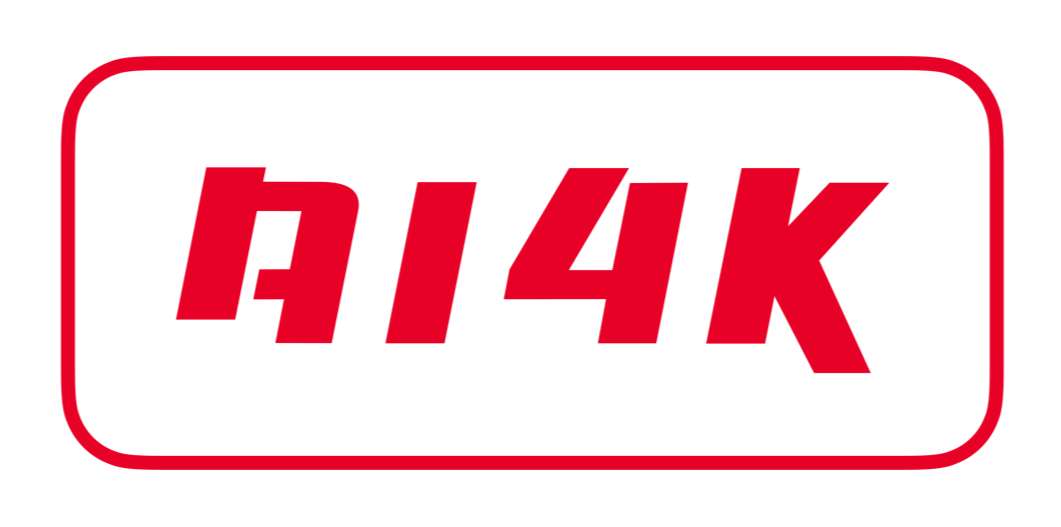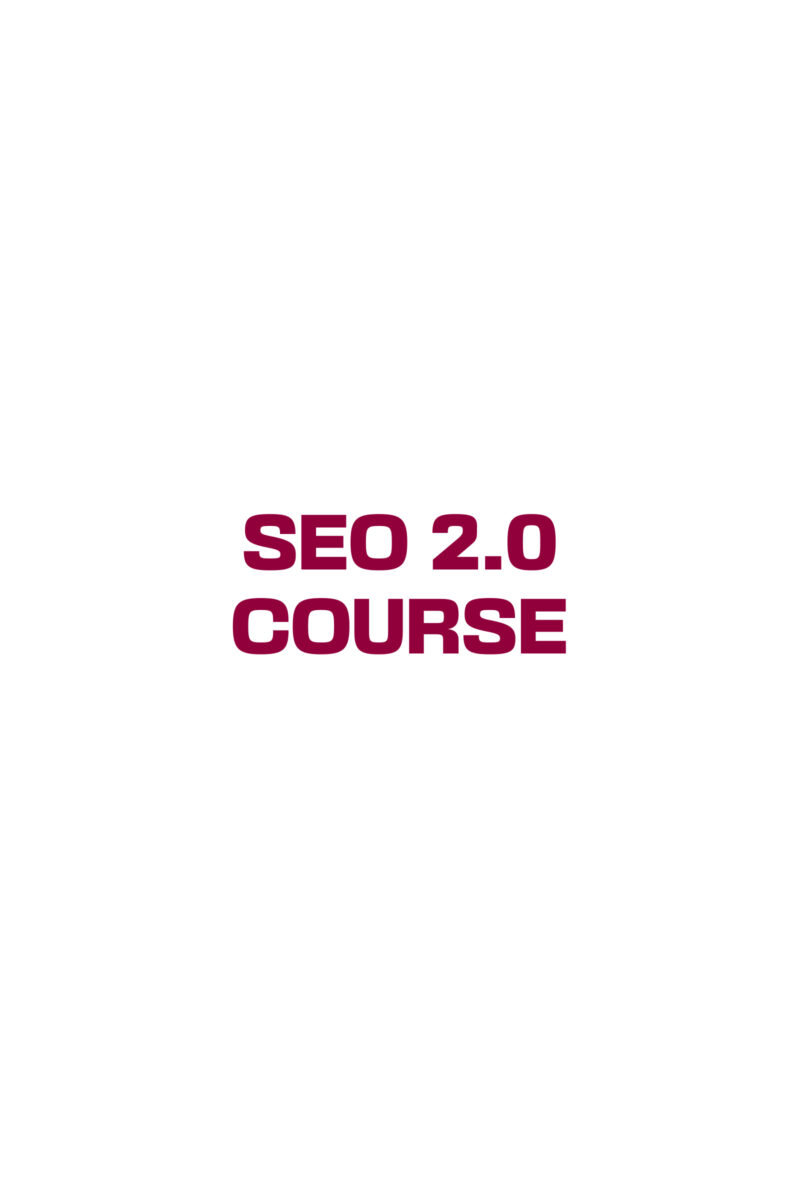Module 1: Introduction to SEO
What is SEO?
Definition of SEO: This section will provide a clear definition of search engine optimization (SEO) as the practice of optimizing websites to improve their visibility and ranking in search engine results pages (SERPs).
The purpose of SEO: Students will learn that the primary goal of SEO is to increase organic (non-paid) traffic to a website by improving its search engine rankings.
How search engines work: This subsection will provide an overview of how search engines like Google and Bing crawl, index, and rank web pages based on various factors such as relevance, authority, and user experience.
Importance of SEO for websites
Benefits of SEO for businesses: Students will explore the advantages that SEO offers to websites and businesses, such as increased visibility, targeted traffic, and potential for higher conversion rates and revenue.
Increased visibility and organic traffic: This section will explain how SEO can improve a website’s visibility in search engine results, leading to higher organic traffic from users actively searching for relevant information or products.
Building brand authority and credibility: Students will learn that by ranking higher in search results, websites can establish themselves as trustworthy and authoritative sources, enhancing their brand reputation.
SEO vs. SEM: Understanding the difference
Definition and scope of SEO and SEM: This subsection will differentiate between SEO (organic, unpaid) and SEM (Search Engine Marketing), which includes both organic and paid search efforts like search engine advertising (pay-per-click).
Organic vs. paid search results: Students will understand the distinction between organic search results, which are influenced by SEO efforts, and paid search results, which involve paid advertising campaigns.
Complementary relationship between SEO and SEM: This section will highlight that while SEO and SEM are separate disciplines, they can work together synergistically to enhance a website’s overall search visibility and marketing performance.
SEO terminology and key concepts
SERP (Search Engine Results Page): Students will learn about the SERP, which is the page displayed by a search engine that shows the results for a user’s search query.
Keywords and key phrases: This subsection will introduce the concept of keywords and key phrases, which are the words or phrases users enter into search engines when looking for information.
Ranking factors and algorithms: Students will gain an understanding of the various factors and algorithms that search engines use to determine the ranking of web pages in search results.
White hat vs. black hat SEO techniques: This section will explain the ethical practices of white hat SEO, which align with search engine guidelines, and contrast them with black hat SEO techniques that attempt to manipulate search rankings and can result in penalties.
By covering these topics in Module 1, students will acquire a solid foundation in SEO, including its definition, importance for websites, distinction from SEM, and key terminology and concepts necessary for further learning in subsequent modules.
Module 2: Keyword Research and Analysis
The role of keywords in SEO
This section will explain the importance of keywords in SEO and how they serve as the bridge between user queries and website content.
Students will learn that keyword optimization helps search engines understand the relevance of web pages to specific search queries.
Tools for keyword research
Students will explore popular keyword research tools such as Google Keyword Planner, SEMrush, and Moz Keyword Explorer.
They will learn how to use these tools to discover relevant keywords, analyze search volumes, and identify keyword variations.
Identifying relevant keywords for your website
This subsection will guide students in conducting keyword research specific to their website or niche.
They will learn techniques to identify keywords that align with their target audience, industry, and business goals.
Long-tail keywords and their significance
Students will understand the concept of long-tail keywords, which are longer and more specific keyword phrases.
They will learn that long-tail keywords often have lower search volume but higher conversion potential, making them valuable for targeted SEO efforts.
Competitive analysis and keyword selection
This section will cover the importance of analyzing competitor websites to identify keywords they are targeting successfully.
Students will learn how to evaluate keyword difficulty and competition to make informed decisions about keyword selection.
By the end of Module 2, students will have a comprehensive understanding of keyword research and analysis. They will know the significance of keywords in SEO, be familiar with popular keyword research tools, know how to identify relevant keywords for their website, recognize the value of long-tail keywords, and understand the importance of competitive analysis in keyword selection. These skills will enable them to develop effective keyword strategies for optimizing website content.
Exercises for Module 1 and 2
EX-1 Keyword Research
EX-2 Competitor Analysis
EX-3 Long-Tail Keyword Research
Module 3: On-Page Optimization
Title tags, meta descriptions, and header tags
This section will cover the importance of title tags, meta descriptions, and header tags in on-page optimization.
Students will learn how to craft compelling and keyword-rich title tags and meta descriptions that accurately describe the content of a web page.
They will understand the significance of header tags (H1, H2, etc.) for organizing content and providing hierarchy to search engines.
URL structure and permalinks
Students will understand the importance of having a clean and user-friendly URL structure.
They will learn how to optimize permalinks to include relevant keywords and make them more understandable to both search engines and users.
Keyword placement and density
This subsection will explain the proper placement of keywords within the content to optimize for search engines.
Students will learn about keyword density and the importance of maintaining a natural and balanced keyword usage throughout the content.
Image optimization and alt tags
Students will understand the significance of optimizing images for search engines and user experience.
They will learn how to optimize image file names, use alt tags effectively, and compress images for faster page loading.
Creating SEO-friendly content
This section will cover best practices for creating content that is optimized for search engines while still providing value to users.
Students will learn about writing engaging and informative content, incorporating keywords naturally, and using formatting techniques for better readability.
Internal linking and site navigation optimization
Students will understand the importance of internal linking for SEO and user experience.
They will learn how to strategically place internal links within content and optimize site navigation to ensure easy access to relevant pages.
By the end of Module 3, students will have a solid understanding of on-page optimization techniques. They will know how to optimize title tags, meta descriptions, and header tags, create user-friendly URL structures, effectively place keywords within content, optimize images with alt tags, create SEO-friendly content, and utilize internal linking and site navigation optimization strategies. These skills will enable them to optimize individual web pages for improved search engine visibility and user experience.
Exercises for Module 3
EX-4 Keywords list and Silo
EX-5 Silo and Categories
EX-6 Keyword Density and tags
Module 4: Technical SEO
Importance of technical SEO
This section will highlight the significance of technical SEO in optimizing a website’s technical infrastructure for improved search engine crawling, indexing, and user experience.
Students will understand how technical SEO can impact website visibility, rankings, and overall performance.
Website crawlability and indexability
Students will learn about the factors that affect search engine crawlers’ ability to access and crawl website content.
They will understand techniques to ensure proper indexation of web pages and resolve issues that may prevent search engines from crawling and indexing website content effectively.
XML sitemaps and robots.txt
This subsection will cover the purpose and creation of XML sitemaps, which help search engines discover and understand website structure and content.
Students will learn how to generate and submit XML sitemaps to search engines and understand the role of robots.txt files in guiding search engine crawlers.
Canonical tags and duplicate content issues
Students will understand the concept of canonical tags and their role in resolving duplicate content issues.
They will learn how to implement canonical tags to consolidate duplicate content and avoid potential penalties from search engines.
Site speed optimization
This section will cover the importance of website speed for both search engine rankings and user experience.
Students will learn techniques to optimize website loading speed, such as image compression, caching, minimizing HTTP requests, and leveraging content delivery networks (CDNs).
Mobile optimization and responsive design
Students will understand the significance of mobile optimization in today’s mobile-first indexing era.
They will learn about responsive design and techniques to ensure that websites provide a seamless and optimized experience across different devices and screen sizes.
By the end of Module 4, students will have a solid understanding of technical SEO. They will grasp the importance of technical SEO for website performance, know how to enhance website crawlability and indexability, be familiar with XML sitemaps and robots.txt, understand canonical tags and duplicate content issues, know techniques for site speed optimization, and comprehend the importance of mobile optimization and responsive design. These skills will enable them to improve the technical aspects of a website to enhance its search engine visibility and user experience.
Exercises for Module 4
EX-7 XML Sitemap Creation
EX-8 Canonical Tag Implementation
EX-9 Website Speed Optimization
Module 5: Off-Page Optimization and Link Building
Introduction to off-page SEO
This section will introduce students to off-page SEO, which focuses on activities outside the website itself to improve its online reputation, authority, and visibility.
They will understand that off-page SEO involves building high-quality backlinks, social media signals, and online mentions.
The role of backlinks in SEO
Students will learn about the significance of backlinks as a major ranking factor in search engine algorithms.
They will understand how backlinks from authoritative and relevant websites can contribute to a website’s credibility and improve its search engine rankings.
Link building strategies and best practices
This subsection will cover various link building strategies, such as guest blogging, content promotion, influencer outreach, and relationship building.
Students will learn about ethical link building practices, including the importance of quality over quantity and natural link acquisition.
Guest blogging and influencer outreach
Students will understand the value of guest blogging as a strategy to build backlinks and gain exposure for their website.
They will learn how to identify relevant websites for guest posting opportunities and establish effective relationships with industry influencers.
Social media signals and their impact on SEO
This section will explain the relationship between social media signals and SEO.
Students will learn how social media activity, engagement, and sharing can indirectly impact a website’s search engine rankings and visibility.
By the end of Module 5, students will have a comprehensive understanding of off-page optimization and link building strategies. They will know the importance of off-page SEO, understand the role of backlinks in SEO, be familiar with various link building strategies and best practices, know how to execute guest blogging and influencer outreach, and understand the impact of social media signals on SEO. These skills will enable them to effectively build high-quality backlinks and improve their website’s online reputation and visibility.
Exercises for Module 5
EX-10 Guest Blogging Outreach
EX-11 Social Media Engagement
EX-12 Online Mention Monitoring
Module 6: Local SEO
Understanding local SEO and its importance
This section will introduce students to the concept of local SEO, which focuses on optimizing a website to attract local customers and improve visibility in local search results.
They will learn about the significance of local SEO for businesses with physical locations or those targeting specific geographical areas.
Optimizing Google My Business listing
Students will understand the importance of Google My Business (GMB) and how it impacts local search results.
They will learn how to create and optimize a GMB listing, including accurate business information, categories, reviews, and images.
Local keyword targeting and citation building
This subsection will cover techniques for targeting local keywords that align with a business’s location and target audience.
Students will learn about citation building, which involves creating consistent and accurate business listings on various online directories and platforms.
Online reviews and reputation management
Students will understand the importance of online reviews and how they impact a business’s local SEO efforts.
They will learn strategies for managing online reviews, generating positive reviews, and addressing negative feedback.
Local link building and community engagement
This section will cover techniques for local link building, such as partnering with local organizations, sponsoring events, and participating in community initiatives.
Students will learn about the significance of community engagement for building local authority and trust.
By the end of Module 6, students will have a solid understanding of local SEO strategies. They will grasp the importance of local SEO, know how to optimize Google My Business listings, understand local keyword targeting and citation building, comprehend the significance of online reviews and reputation management, and understand the role of local link building and community engagement. These skills will enable them to enhance their local online presence and attract customers from specific geographical areas.
Exercises for Module 6
EX-13 Creating and Optimizing a Google My Business Listing
EX-14 Local Keyword Targeting and Citation Building
EX-15 Online Reviews and Reputation Management
Module 7: SEO Analytics and Reporting
Introduction to SEO analytics
This section will introduce students to the importance of SEO analytics in measuring the effectiveness of SEO efforts and making data-driven decisions.
They will understand the role of analytics in tracking website performance, identifying trends, and measuring key metrics.
Setting up Google Analytics
Students will learn how to set up and configure Google Analytics, a widely used web analytics tool.
They will understand the importance of adding tracking codes to their website and how to navigate through the Google Analytics interface.
Key SEO metrics and their interpretation
This subsection will cover essential SEO metrics, such as organic traffic, keyword rankings, bounce rate, conversion rate, and click-through rate (CTR).
Students will learn how to interpret these metrics to assess the performance of their SEO campaigns and identify areas for improvement.
Tracking and analyzing keyword rankings
Students will understand how to track keyword rankings using SEO tools and interpret the data to evaluate their SEO performance.
They will learn techniques to monitor keyword fluctuations, identify opportunities for optimization, and track the impact of SEO efforts.
SEO reporting and data visualization
This section will cover the importance of regular SEO reporting to stakeholders and clients.
Students will learn how to create comprehensive SEO reports, present data in a clear and understandable manner, and communicate the impact of SEO efforts effectively.
A/B testing and conversion rate optimization (CRO)
Students will understand the concept of A/B testing and its application in optimizing website elements for improved conversion rates.
They will learn techniques to conduct A/B tests, track results, and make data-driven decisions to enhance website performance.
By the end of Module 7, students will have a solid understanding of SEO analytics and reporting. They will know how to set up and use Google Analytics, interpret key SEO metrics, track and analyze keyword rankings, create comprehensive SEO reports, and understand the importance of A/B testing and conversion rate optimization. These skills will enable them to monitor and evaluate the success of their SEO campaigns, make informed decisions, and demonstrate the value of SEO efforts to stakeholders and clients.
Exercises for Module 7
EX-16 GSC to GA4
EX-17 Google Tag manager and GA4
EX-18 Google Looker Studio
Exercises for Module 8
EX-19 Google Merchant Center
EX-20 AI and SEO
EX-21 Recycling content and design
Module 8: SEO Best Practices and Future Trends
Best practices for sustainable SEO
This section will cover important SEO best practices that are fundamental to long-term success.
Students will learn about creating high-quality, user-focused content, ensuring website accessibility and mobile-friendliness, optimizing site speed, and adhering to ethical SEO practices.
Voice search optimization
Students will understand the growing significance of voice search and how it impacts SEO.
They will learn techniques for optimizing content and website structure to cater to voice search queries.
Featured snippets and schema markup
This subsection will cover featured snippets, which are prominently displayed search results that provide concise answers to user queries.
Students will learn how to optimize content to increase the chances of appearing in featured snippets and how to use schema markup to provide additional context to search engines.
E-commerce SEO
Students will understand the unique considerations and strategies for optimizing e-commerce websites for search engines.
They will learn techniques for optimizing product pages, managing site structure, improving user experience, and driving organic traffic to e-commerce sites.
Mobile-first indexing and responsive design
This section will explore the significance of mobile-first indexing, where search engines prioritize the mobile version of a website’s content for indexing and ranking.
Students will learn how to ensure their website is mobile-friendly and optimized for mobile-first indexing.
Keeping up with SEO trends and algorithm updates
Students will understand the importance of staying updated with the latest SEO trends and algorithm updates, including updates of 2024 Google leaked signals.
They will learn techniques for staying informed, following reputable industry sources, and adapting their SEO strategies accordingly.
By the end of Module 8, students will have a comprehensive understanding of SEO best practices and future trends. They will be familiar with sustainable SEO practices, voice search optimization, featured snippets and schema markup, e-commerce SEO strategies, mobile-first indexing, and the importance of staying updated with SEO trends and algorithm updates. These skills will empower students to implement effective and forward-thinking SEO strategies to achieve long-term success.



